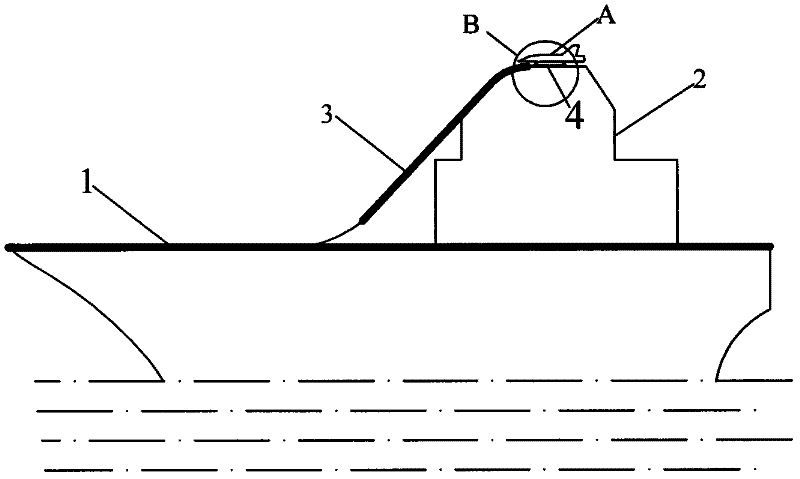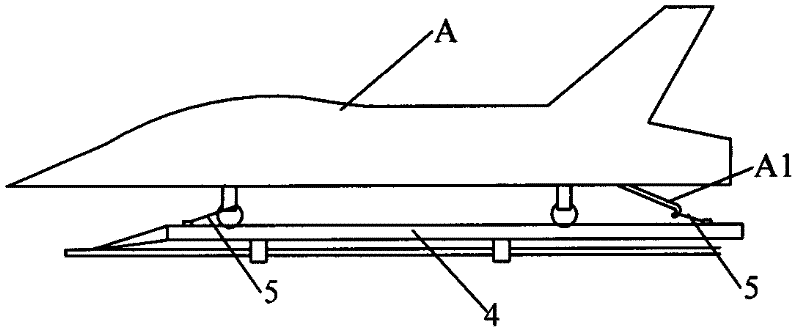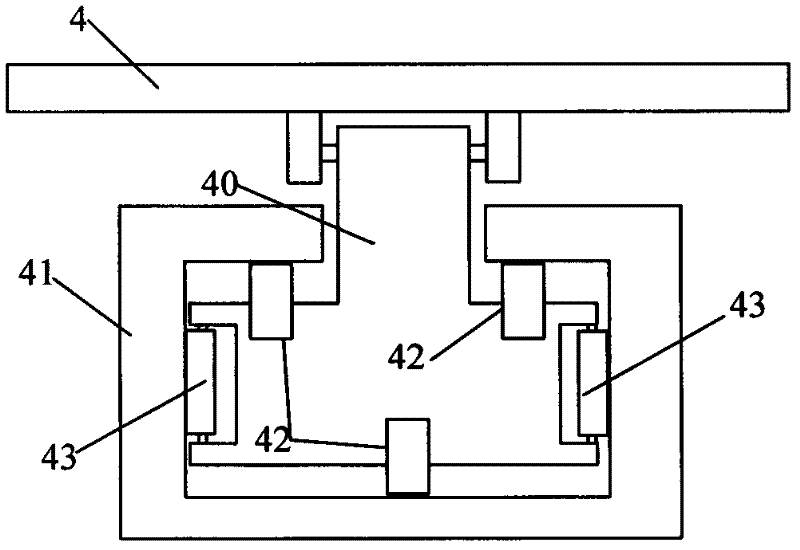Assisted takeoff system of airplane
A technology of aircraft and slides, which is applied to aircraft parts, motor vehicles, special-purpose ships, etc., and can solve problems such as complex structure of catapults, limited range of operations, and heavy weight
- Summary
- Abstract
- Description
- Claims
- Application Information
AI Technical Summary
Problems solved by technology
Method used
Image
Examples
Embodiment Construction
[0016] Such as figure 1 and figure 2 As shown, the present invention provides an embodiment of an aircraft auxiliary take-off system.
[0017] The aircraft auxiliary take-off system includes: a slope slideway 3 that can convert gravitational potential energy into kinetic energy and a tackle 4 that cooperates with the slideway 3 and moves along it. One end of the slideway 3 is smoothly connected with the aircraft carrier flight deck 1, and the other end is connected with the The aircraft carrier island 2 is fixed, and the start end of the slideway located at the island end 2 is in a horizontal state.
[0018] Specifically, a pulley 4 is provided at the starting end of the slideway 3, and three slide blocks 40 hinged thereto are provided at the bottom of the slideway 4, and the guide groove 41 on the slide block 40 and the slideway 3 Sliding fit, that is, the lower part of the slider 40 is embedded in the guide groove 41 on the slideway 3 , and the upper part of the slider 40...
PUM
 Login to View More
Login to View More Abstract
Description
Claims
Application Information
 Login to View More
Login to View More - R&D
- Intellectual Property
- Life Sciences
- Materials
- Tech Scout
- Unparalleled Data Quality
- Higher Quality Content
- 60% Fewer Hallucinations
Browse by: Latest US Patents, China's latest patents, Technical Efficacy Thesaurus, Application Domain, Technology Topic, Popular Technical Reports.
© 2025 PatSnap. All rights reserved.Legal|Privacy policy|Modern Slavery Act Transparency Statement|Sitemap|About US| Contact US: help@patsnap.com



